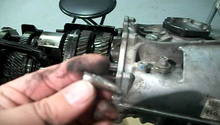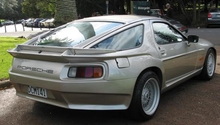Porsche 928: Why is My Transmission Whining?
Many owners will experience a transmission whine during their ownership of the Porsche 928, but it can often be difficult to determine if there is a problem, or if it is just one of the idiosyncrasies of the 928 automatic transmission. Find out why your Porsche 928's transmission is whining, and what you can do to resolve the problem.
This article applies to the Porsche (1978-1995).
Porsche 928 models equipped with automatic transmissions were a popular choice for Porsche 928 owners throughout its production run. Many owners, over a period of time, begin to experience a whine in the automatic transmission or components linked to it. While detecting a whine can be unnerving, there are a few simple steps that can be taken to ensure your transmission is operating normally.

Materials Needed
- Floor jack and jack stands or vehicle lift
- Ratchet and metric sockets
- Metric hex key sockets
- Torque wrench
- Transmission fill tool, syringe, or equivalent (for topping off transmission fluid)
Step 1 – Check transmission fluid level
The 928 automatic transmissions are very sensitive to the correct fluid level in order to ensure correct operation. With the transmission fluid reservoir hidden underneath the car on the side of the transmission, fluid level inspection can easily be overlooked. It is often not until problems arise in the operation of the transmission, whether it be slipping or whining, that individuals remember to check their fluid level. While the fluid level can be checked with the car on a level surface, placing the car on jack stands or a lift will aid in filling the reservoir if it is necessary.
- Per Porsche, the automatic transmission fluid level check is most accurate when the transmission is cold.
- Be sure the car is on a leveled surface. Start the car, place transmission in neutral, and set the parking brake.
- Let car idle 1-2 minutes to allow the torque converter to fill up with fluid.
- On the passenger's side of the car (inside the rear wheel) is the fluid reservoir. Inspect the fluid level (best accomplished by laying down and looking upwards). It should be at the lower mark on the fluid reservoir.
- If fluid is low, fill the reservoir until it is at the lower level mark.
- If fluid level is correct, get in the car, and, with your foot on the brake, shift the transmission through each gear (Park, Reverse, Neutral, and Drive). Allow 15 seconds between each shift to ensure transmission is circulating fluid. When done, place the transmission in neutral.
- Once again, inspect the fluid reservoir to ensure fluid is at the lower mark.
- DO NOT OVERFILL! Overfilling can damage the transmission on a long term basis. If overfilling occurs, excessive fluid must be siphoned out of the reservoir until the fluid level is correct.
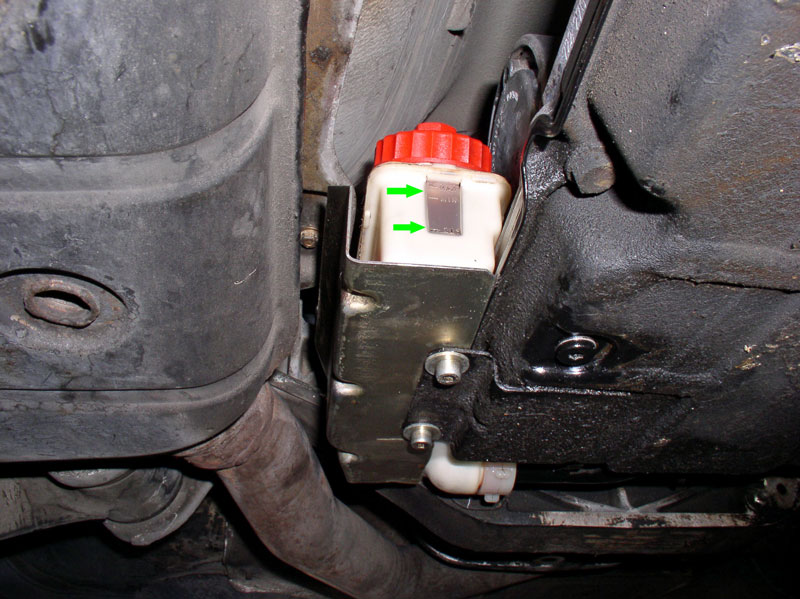
Pro Tip
The transmission fluid level is only at the upper mark in the reservoir when at operating temperature. If inspecting the reservoir with the car off, do no be alarmed if the reservoir looks overfull because this is normal.
If the automatic transmission fluid level is correct, proceed to Step 2.
Step 2 – Determine whine occurrence
If your fluid level is correct and your transmission seems to be operating normally, but you are still hearing a whine, it is a good idea to get a general understanding of when the whine is occurring. Owners often report transmission whine in park or neutral, but the transmission is quiet when in gear. Similarly, others have heard a whine in reverse and in the 1'st gear when traveling very slowly. Fortunately, many of the whines associated with the 928 automatic transmission have been deemed "Normal." Individuals have changed their torque converter, torque converter bearings, as well as the primary pump in the transmission without experiencing a change in the transmission whine. Additionally, individuals have driven over 100K miles with these transmission whines present, and have had no issues with reliability or performance. So if you keep up on regular transmission fluid maintenance and see no foreign material in the transmission fluid, you can often continue to drive your 928 with little worry.
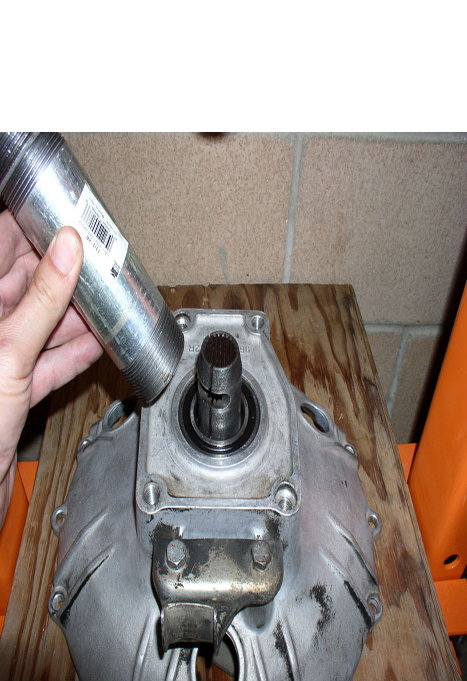
Figure 2. Torque converter bearing replacement. 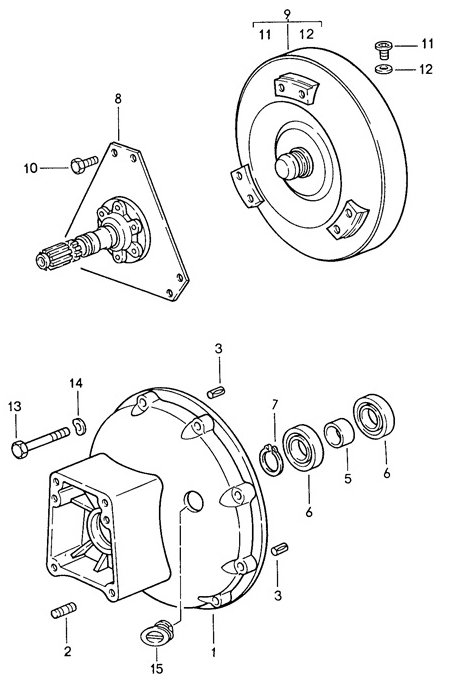
Figure 3. Torque converter and housing.
If you are experiencing a whine while traveling at speed, proceed to Step 3.
Step 3 – Test torque tube for whine
A whine while traveling down the road may likely be linked to the torque tube. The torque tube links the engine to the front of the transmission in the rear of the car via its splined shafts. The drive shaft inside the tube is supported by bearings, and when the bearings wear, they can make a whirring or whining noise. Similarly, the torque tube can creep up on the flex plate of the engine, and place pressure on the thrust bearing. This can also create a whine, and can eventually cause thrust bearing failure in the automatic transmission. The first test should be to check the clamp on the flexplate that secures the torque tube shaft to the engine.
- Raise the car, and support it with jack stands
- Remove the flywheel housing cover.
- Loosen the pinch bolt on the shaft. If creep has occurred, you will see tension be let off of the shaft. Tighten and torque to 66 ft lbs.
If this procedure has still not cured the whine, it is possible the torque tube bearings are making the noise. Maintenance intervals of 75K miles for the torque tube bearings are recommended; however, some owners have changed bearings, but still experienced the whine.
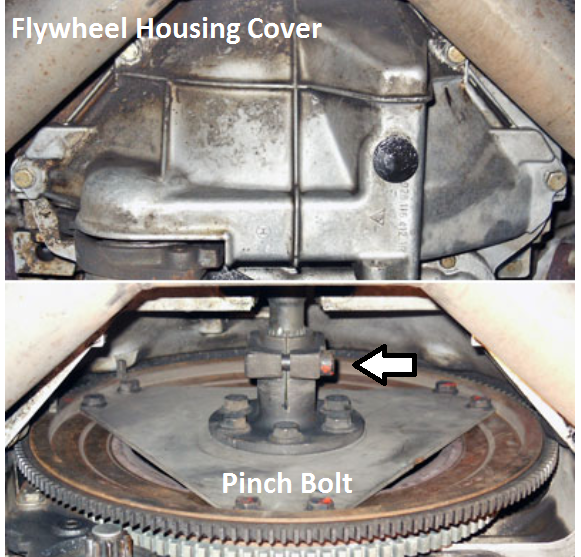
Pro Tip
A simple test to find out if the torque tube is responsible for the whine is to drive along at approximately 50 to 60 mph, shift into neutral, and then shut off the engine. If the noise has disappeared, the torque tube is not the culprit, and is most likely in the differential, CV joints, or wheel bearings. FOR SAFETY, THIS TEST MUST BE PERFORMED ON A PRIVATE ROAD.
If the torque tube is not the source of the whine, proceed to Step 4.
Step 4 – Differential
The differential has been known to whine on the 928 at lower speeds. Although this has been considered by many to be normal, others have opted to disassemble the differential to find the source of the problem. Although the ring and pinion gear wear is typically little to non-existent and can last the life of the car, some owners opt to either replace their ring as well as pinion, or adjust the backlash. Either way, both cases usually result in the whine still being present. General consensus is not to spend time or money attempting to eliminate differential whine.

Related Discussions
- Topping Off Transmission Fluid - Rennlist.com
- 928 Torque Tube Bearing Noise - Rennlist.com
- Differential Whine - Rennlist.com


